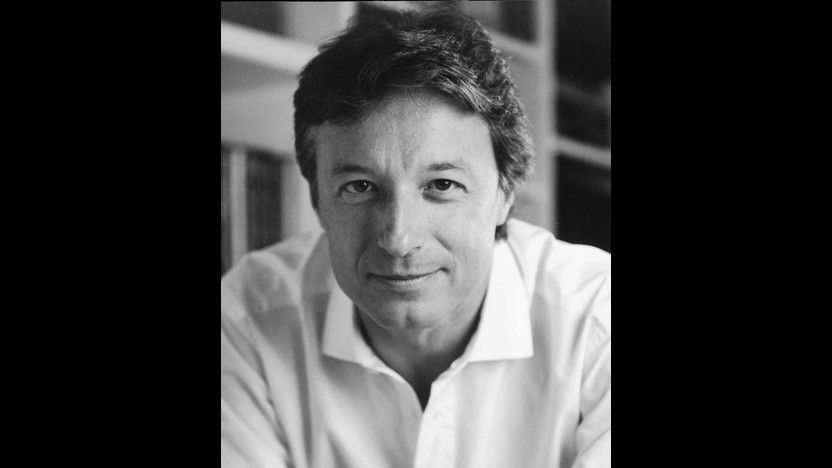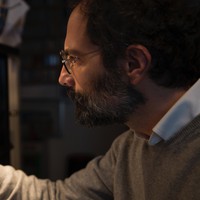Opening Night 2014

Sponsored By
- September 13, 2014


Sponsored By

 Listen to Audio
Listen to Audio
Upon finishing the Seventh Symphony in the spring of 1812, Ludwig van Beethoven began immediately on his Eighth. He worked on it through a summer retreat in the spa town of Teplitz, where he wrote (but never sent) a heartbreaking love letter to his “Immortal Beloved,” who may have been Antonie Brentano, a married woman from Frankfurt. With the Napoleonic Wars disrupting concert life in Vienna, the Seventh Symphony did not reach the public until the end of 1813, and the Eighth was delayed until February of 1814, in a performance that Beethoven conducted, despite his near-total deafness.
The Eighth Symphony, in its length and instrumentation, is a throwback to Franz Joseph Haydn’s “London” Symphonies from the 1790s. Still, Beethoven’s efficiency should not be confused with complacency; this was a period in which the central thrust of his music was the distillation of each gesture down to its essence, whether it was the imposing “fate” motive of the Fifth Symphony or the jolly intervals and fragments that underpin the Eighth.
The opening passage of the Eighth Symphony is a study in balance: downward motion answered by upward; loud followed by soft. Having offered a full glimpse of the primary theme, Beethoven immediately deconstructs it into its essential, leaping gesture. The leaps segue into the secondary theme (in the “wrong” key, incidentally), and this motive gets hung up too and starts leaping again. Eventually the whole orchestra piles on with jumps up and down in octaves, a gesture that carries forward into the development section.
The second movement, marked Allegretto scherzando, is as close as this symphony gets to a slow movement. Here the object of obsession is a brisk, three-note pattern: short-short-long, usually cast as a leap up and a step down into a target note. The strings juggle this motive like a hot potato under the watchful eyes of clucking woodwinds. Three notes at times reduce down to two, and finally it ends with a shudder on a single pitch.
Having dispensed with the joking in the second movement, the third movement takes the form of a graceful minuet, rather than a more rambunctious scherzo. The warm, slurred string lines offset the dryness of the preceding music, and the contrasting trio section evokes a pastoral air with horn calls and clarinet counter-lines.
The finale flies by at a whirlwind Allegro vivace tempo, which Beethoven specified as 84 measures per minute. (When the violins enter with tremolo figures, each note lasts not quite six-hundredths of a second!) Besides the obvious excitement of such fast music, it invites the ear to draw out larger patterns from within motion that is too quick to process on a note-by-note basis, forming another strategy to crystallize the essence of musical material.
Aaron Grad ©2023
 Listen to Audio
Listen to Audio
Composer’s Note:
The score is inspired by the urban gardens that are becoming a new, exciting presence in our cities. In such a setting I imagined the piano as an urban memory and the orchestra as a green, vegetal presence that surrounds it. Doing that, I created in my mind three special places to develop the different movements of the score.
The first is indeed ideally On a Concert Hall Rooftop: some echoes of great piano concertos of the past—not their actual notes, rhythms, or sounds but just faint memories of them—come to visit the piano part, whereas the orchestra is agitated by the pressure of plants that are growing up, seeds that are unfolding, and vegetables that are expanding.
The second movement is imagined In a Jazz Club Courtyard, where the piano, for most of the section, is surrounded just by winds, brass, and percussion instruments. There is something connected to a blues-style ballad, in the main theme, but some other different elements are part of the movement, from a dramatic climax to a variation where the piano part is written in a toccata style. The peculiar ability of jazz to devour and transform everything is evoked in the final section, where the strings, too, become part of the game: the piano presents some micro-quotes of classical repertoire in a jazz style and the dialog between the two worlds is strongly underlined.
The third movement hails from an urban garden created On a Studio Terrace and the general form, the musical materials, and some specific orchestral solutions are connected to the job of recording and editing in a studio. Probably our imaginary plants are now big and strong, because their sound is full of energy and rhythm, and if you think you’re listening to a tomato or to some string beans ready to be picked, you’re not completely wrong.
Nicola Campogrande ©2012
 Watch Video
Watch Video
Western classical music is frequently tied to politics, as was the case with Ludwig van Beethoven and several of his symphonies. Most noteworthy, perhaps, was Beethoven’s dedication of his third symphony to Napoleon, which the composer erased upon learning that Napoleon had declared himself emperor. Beethoven’s Symphony No. 7 is also often interpreted as a musical confrontation with Napoleon, whose troops had recently occupied Vienna.
Beethoven composed Symphony No. 7 between 1811 and 1812, at the same time Napoleon was planning his campaign against Russia. The piece was dedicated to Count Moritz von Fries, an Austrian patron of the arts, and the Russian Empress Elisabeth Aleksiev. In December 1813, Beethoven conducted the premiere at the University of Vienna. The event was a charity concert for soldiers wounded in the Battle of Hanau, and Beethoven remarked at the concert’s opening that “we are moved by nothing but pure patriotism.”
The first movement of Symphony No. 7 begins with a long, slow introduction composed of ascending scales. This introduction transitions to the Vivace section through a series of sixty-one repetitions of the pitch E. Dance-like rhythms permeate the entire symphony, including the first theme of the Vivace section. The last few minutes of the movement feature a coda, which contains a remarkable passage of a two-measure motive that is repeated ten times in a row. This repeated motive occurs at the same time as the other instruments play a four-octave pedal point on the pitch E.
So popular that it was encored at the premiere, the second movement of Symphony No. 7 is often performed today as a stand-alone piece. The movement is in ternary form, or three large sections. The first and third sections are composed of similar thematic material and feature a repeated ostinato pattern of a quarter note, two eighth notes, and two quarter notes. These two sections are in the key of A minor, and Beethoven demonstrates his skill with imitative counterpoint in the third section, which is structured as a fugato. The contrasting middle section in A major contains a warm melody in the clarinets, which is accompanied by triplets in the violins.
A scherzo is a musical joke in which humor is created through compositional devices such as unequal phrase structures, disjunct rhythms, alternating meters and unexpected harmonies. Beethoven employs most of these techniques in the third movement of Symphony No. 7, which is divided into five large sections alternating ABABA. The A sections are rhythmically vigorous and composed of jagged, irregular phrases. The B sections contain quotations of the Austrian pilgrims’ hymn.
Symphony No. 7 closes with a movement full of fiery, relentless passion and perpetual motion. The first theme of the movement is a modified version of the instrumental ritornello to Beethoven’s own arrangement of the Irish folk song “Save me from the grave and wise.” Symphony No. 7 was regarded by Beethoven as one of his best compositions, and a newspaper account of an early performance recalled that the “applause rose to the point of ecstasy.”
Paula Maust ©2022
Visit our Green Room page for information on our Opening Night Post-Concert Celebration.
This concert is part of our complete Beethoven symphony cycle.
Get driving directions and find nearby parking.
Find dining options close to the venue.
View seating charts to find out where you'll be seating.
Get driving directions and find nearby parking.
Find dining options close to the venue.
View seating charts to find out where you'll be seating.
